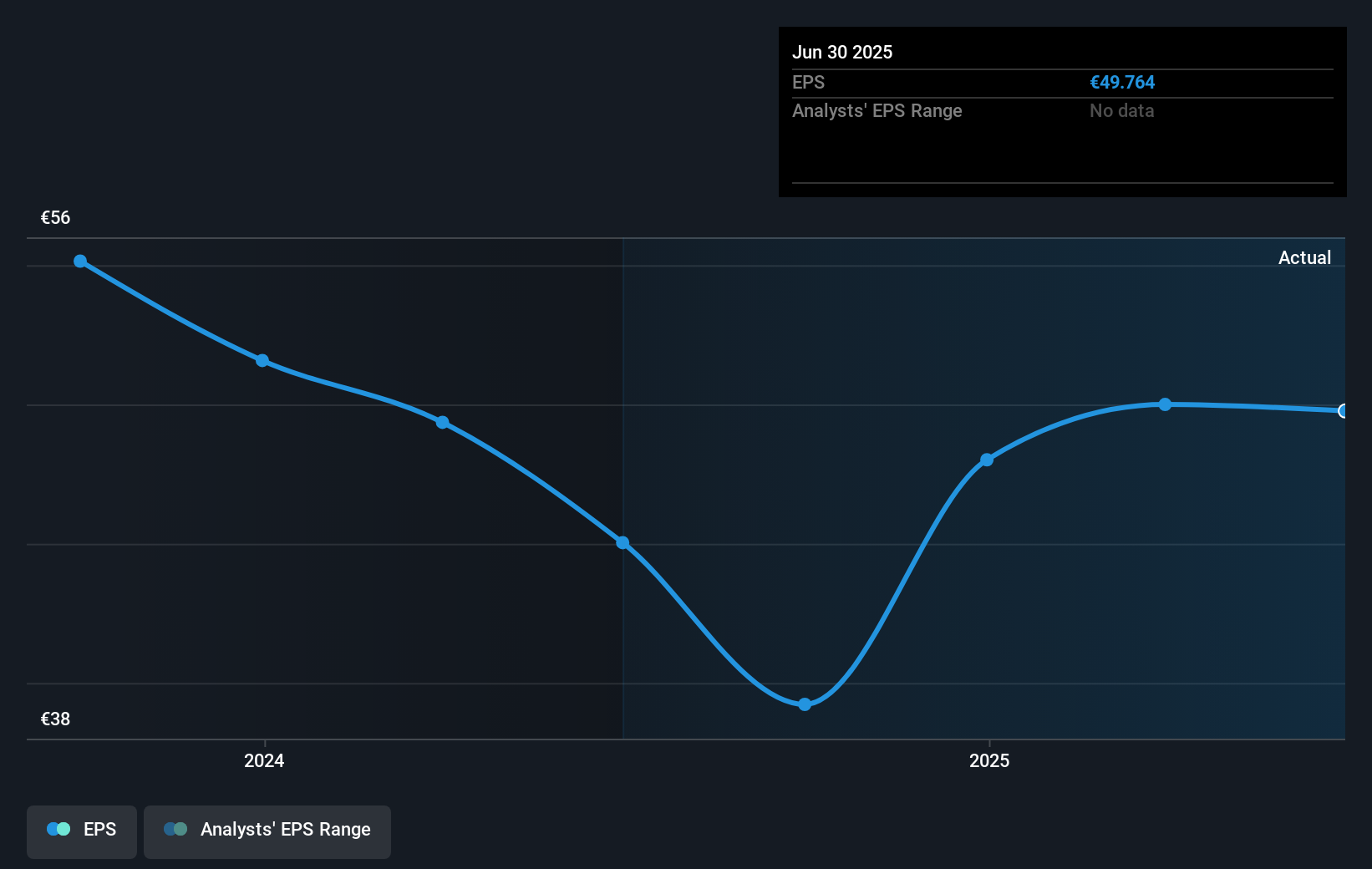- Croatia
- /
- Oil and Gas
- /
- ZGSE:JNAF
Jadranski naftovod d.d's (ZGSE:JNAF) five-year earnings growth trails the 11% YoY shareholder returns
When you buy and hold a stock for the long term, you definitely want it to provide a positive return. But more than that, you probably want to see it rise more than the market average. Unfortunately for shareholders, while the Jadranski naftovod d.d. (ZGSE:JNAF) share price is up 51% in the last five years, that's less than the market return. Meanwhile, the last twelve months saw the share price rise 2.4%.
On the back of a solid 7-day performance, let's check what role the company's fundamentals have played in driving long term shareholder returns.
While markets are a powerful pricing mechanism, share prices reflect investor sentiment, not just underlying business performance. By comparing earnings per share (EPS) and share price changes over time, we can get a feel for how investor attitudes to a company have morphed over time.
During the five years of share price growth, Jadranski naftovod d.d moved from a loss to profitability. That's generally thought to be a genuine positive, so investors may expect to see an increasing share price.
The company's earnings per share (over time) is depicted in the image below (click to see the exact numbers).

Dive deeper into Jadranski naftovod d.d's key metrics by checking this interactive graph of Jadranski naftovod d.d's earnings, revenue and cash flow.
What About Dividends?
As well as measuring the share price return, investors should also consider the total shareholder return (TSR). Whereas the share price return only reflects the change in the share price, the TSR includes the value of dividends (assuming they were reinvested) and the benefit of any discounted capital raising or spin-off. It's fair to say that the TSR gives a more complete picture for stocks that pay a dividend. As it happens, Jadranski naftovod d.d's TSR for the last 5 years was 70%, which exceeds the share price return mentioned earlier. And there's no prize for guessing that the dividend payments largely explain the divergence!
A Different Perspective
Jadranski naftovod d.d shareholders gained a total return of 6.0% during the year. Unfortunately this falls short of the market return. On the bright side, the longer term returns (running at about 11% a year, over half a decade) look better. It may well be that this is a business worth popping on the watching, given the continuing positive reception, over time, from the market. I find it very interesting to look at share price over the long term as a proxy for business performance. But to truly gain insight, we need to consider other information, too. Take risks, for example - Jadranski naftovod d.d has 2 warning signs (and 1 which makes us a bit uncomfortable) we think you should know about.
If you are like me, then you will not want to miss this free list of undervalued small caps that insiders are buying.
Please note, the market returns quoted in this article reflect the market weighted average returns of stocks that currently trade on Croatian exchanges.
New: Manage All Your Stock Portfolios in One Place
We've created the ultimate portfolio companion for stock investors, and it's free.
• Connect an unlimited number of Portfolios and see your total in one currency
• Be alerted to new Warning Signs or Risks via email or mobile
• Track the Fair Value of your stocks
Have feedback on this article? Concerned about the content? Get in touch with us directly. Alternatively, email editorial-team (at) simplywallst.com.
This article by Simply Wall St is general in nature. We provide commentary based on historical data and analyst forecasts only using an unbiased methodology and our articles are not intended to be financial advice. It does not constitute a recommendation to buy or sell any stock, and does not take account of your objectives, or your financial situation. We aim to bring you long-term focused analysis driven by fundamental data. Note that our analysis may not factor in the latest price-sensitive company announcements or qualitative material. Simply Wall St has no position in any stocks mentioned.
About ZGSE:JNAF
Jadranski naftovod d.d
Engages in the transport and storage of oil and oil products in the Republic of Croatia and internationally.
Flawless balance sheet with solid track record and pays a dividend.
Market Insights
Community Narratives



